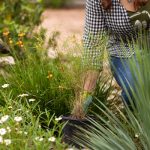San Antonio’s climate and geology are ideal for a Mediterranean garden.
There have been a lot of stories in the news recently about the benefits of the Mediterranean diet . It turns out a Mediterranean garden can be good for us, too — and ideal for San Antonio’s climate and geology.
Our climate similarities include short wet winters, long springs, hot dry summers and mild falls. Soils in both regions are characterized by thin soils on a limestone substrate, alkaline clays and some sandy areas.
As for large, expansive lawns, they derive from England and northern Europe where temperatures are cooler and rain is more regular, and are very rarely part of any Mediterranean garden. In fact, our Hill Country-like soils present the perfect opportunity for colorful, drought-hardy lawn alternatives.
Mediterranean garden design elements include:
- Significant patios often made of tile, brick or stone.
- Well placed container plants. Invest in one or two large impactful pots instead of lots of little ones, they’re easier to care for and more impactful.
- A statue or two, or as we say in Texas, some yard art.
- Fountains create a serene atmosphere and are a better use of water than a thirsty lawn.
- Fragrant plants like mountain laurel, sweet olive or confederate jasmine.
- Interesting textures and vivid colors in the form of plants or paint. Textural plants include Texas persimmon, sego, nolina, giant crinum lily or fuzzy lamb’s ear. For vivid color try Moy Grande hibiscus, Pride of Barbados, esperanza or plumbago. Or just paint a feature wall or fence a bold, bright color.
Since Mediterranean weather often means hot incorporate a shady retreat and an outdoor-rated ceiling fan, if possible. Be sure to include a nice size table and enough chairs so you can gather with family and friends as you enjoy your Mediterranean fare.




